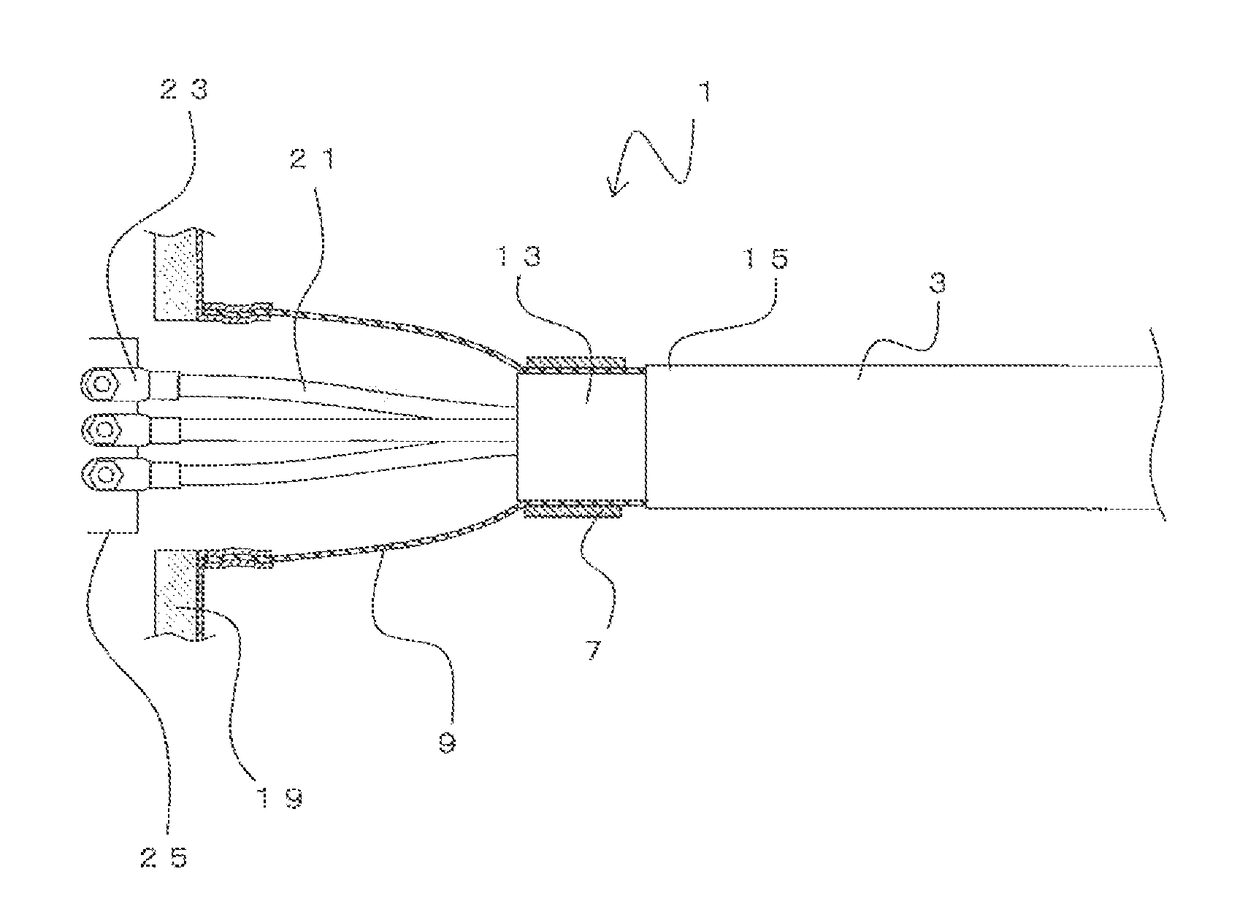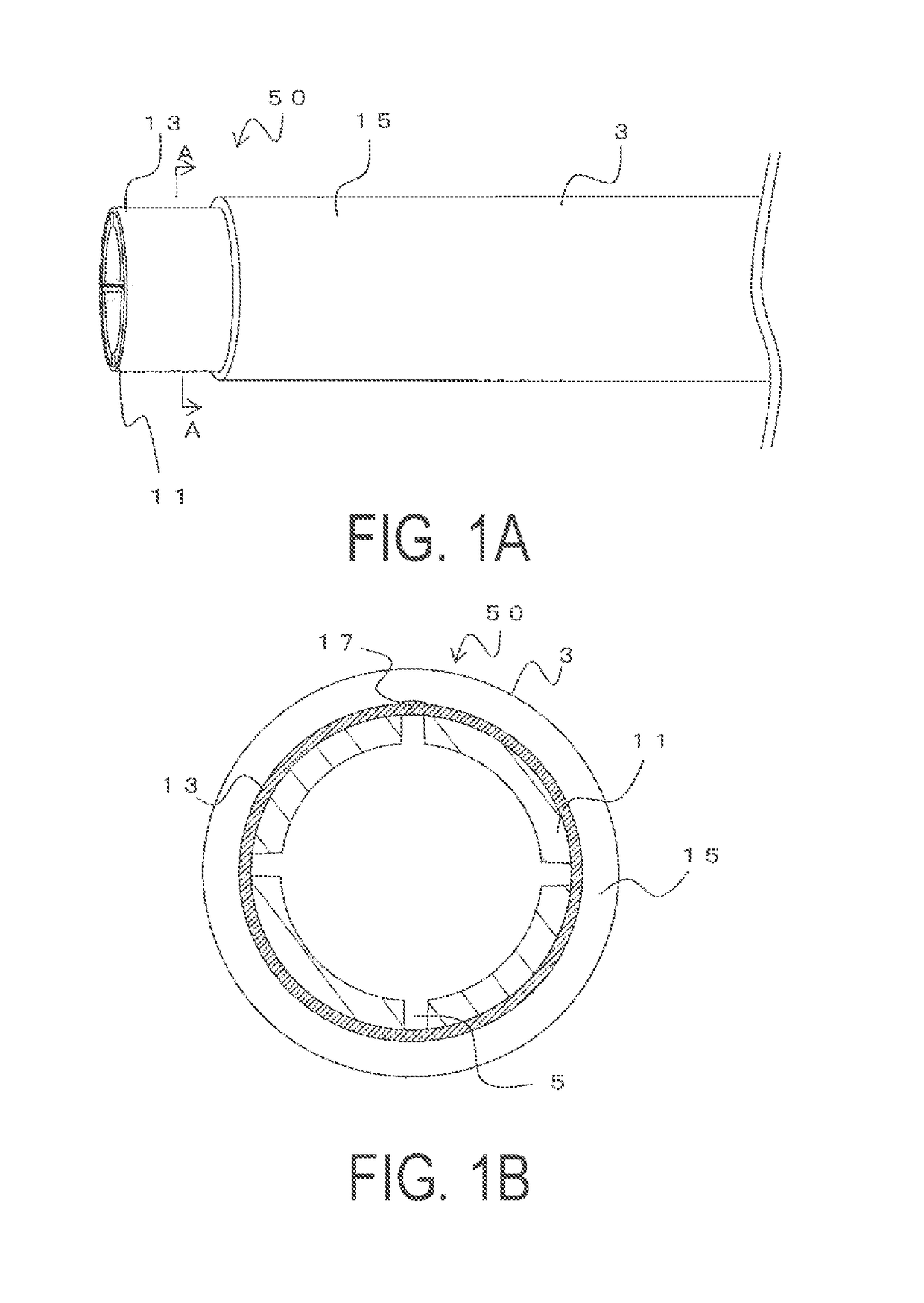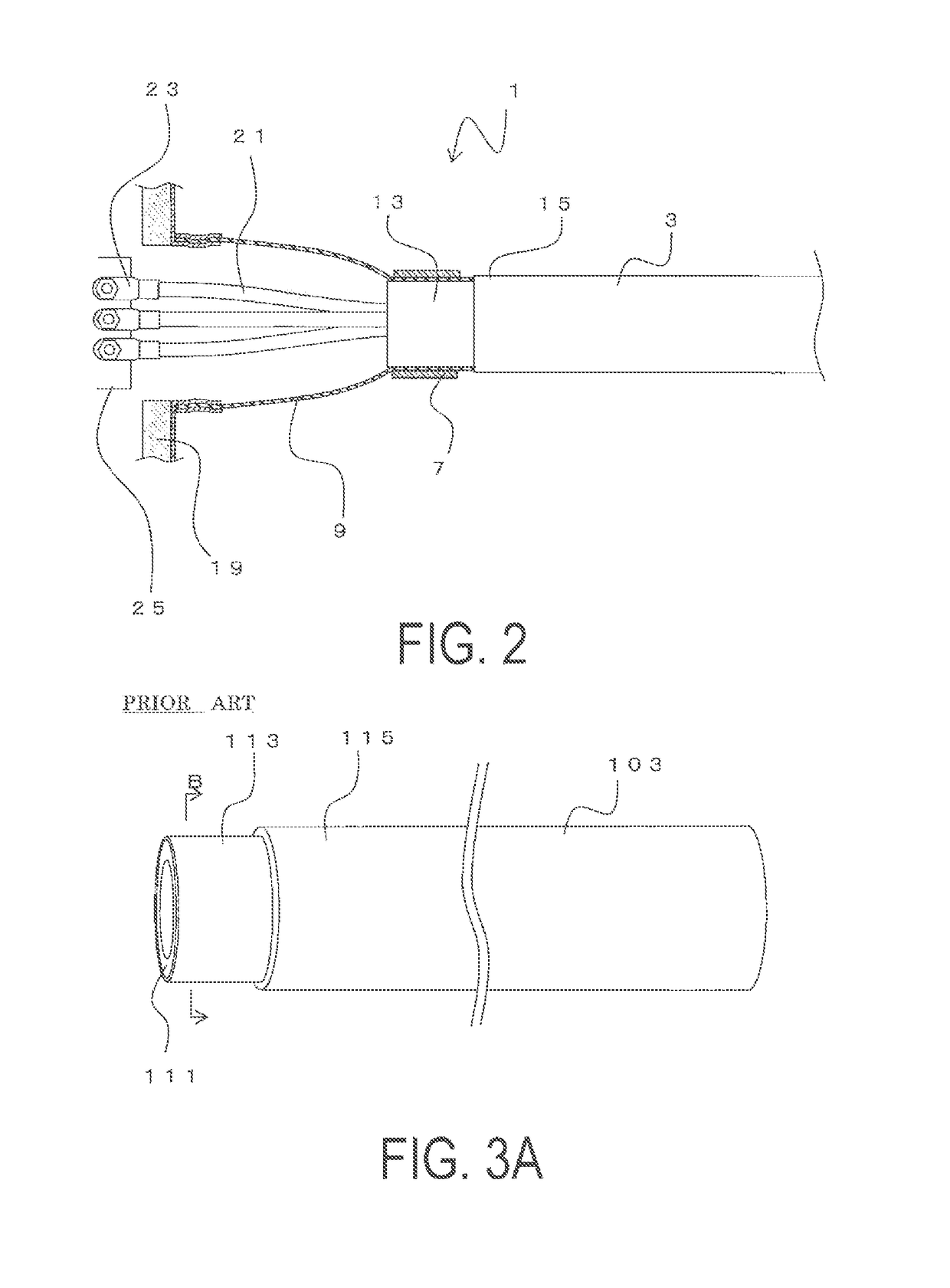Electromagnetic shielding tube and electromagnetic shielding structure
a technology of electromagnetic shielding and electromagnetic shielding, applied in the direction of flexible conductors, insulating bodies, contact contact member materials, etc., can solve the problems of difficulty in maintaining the predetermined internal diameter, weight, and possible problems, and achieve the effect of reducing the effect and increasing the contact resistan
- Summary
- Abstract
- Description
- Claims
- Application Information
AI Technical Summary
Benefits of technology
Problems solved by technology
Method used
Image
Examples
second embodiment
[0111]Next, a second embodiment will be described. FIG. 4 is a cross-sectional view illustrating an electromagnetic shielding tube 3a. Note that, in the description below, constituent elements which serve the same functions as in the configuration illustrated in FIGS. 1A, 1B, and 2 are assigned the same reference numerals as in FIGS. 1A, 1B, and 2, and redundant descriptions of those constituent elements are foregone.
[0112]The electromagnetic shielding tube 3a is substantially the same as the electromagnetic shielding tube 3, with the exception of the terminal processed portion (the stress transmission suppressing structure). In the electromagnetic shielding tube 3a, a terminal processed portion 50a, namely a separated portion 27, is provided between the inner layer 11 and the metal layer 13. The separated portion 27 is a portion where the outer surface of the inner layer 11 and the inner surface of the metal layer 13 are separated and are not joined to each other.
[0113]Note that it...
third embodiment
[0118]Next, a third embodiment will be described. FIG. 5A is a perspective view of an electromagnetic shielding tube 3b; FIG. 5B is a cross-sectional view perpendicular to a length direction of the electromagnetic shielding tube 3b, and is a cross-sectional view taken along line C-C of FIG. 5A.
[0119]As described above, the outer layer 15 is peeled exactly a predetermined length from the end portion of the electromagnetic shielding tube 3b. That is, the metal layer 13 is exposed exactly a predetermined range at the end portion of the electromagnetic shielding tube 3b. A terminal processed portion 50b, namely an uneven portion 29, is formed on at least a portion of the exposed portion of the metal layer 13. The uneven portion 29 is a fine uneven shape formed on the outer peripheral surface of the metal layer 13, and is formed on the entire periphery in the circumferential direction of the metal layer 13. Note that it is preferable that raised portions of the uneven portion 29 are posi...
fourth embodiment
[0128]Next, a fourth embodiment will be described. FIG. 7A is a perspective view illustrating an electromagnetic shielding tube 3f; FIG. 7B is a cross-sectional view perpendicular to a length direction of the electromagnetic shielding tube 3f, and is a cross-sectional view taken along line J-J of FIG. 7A. The electromagnetic shielding tube 3f is substantially the same as the electromagnetic shielding tube 3b, with the exception that the groove-like separated portion 5 of the electromagnetic shielding tube 3 described above is provided in the inner layer 11. The separated portion 5 is a structure for suppressing the transmission of stress caused by changes in temperature between the inner layer 11 and the metal layer 13. That is, in the electromagnetic shielding tube 3f, terminal processed portions 50f, namely the uneven portion 29 and the separated portion 5, are provided.
[0129]The same effects can be obtained in the fourth embodiment as in the third embodiment. Additionally, the te...
PUM
 Login to View More
Login to View More Abstract
Description
Claims
Application Information
 Login to View More
Login to View More - R&D
- Intellectual Property
- Life Sciences
- Materials
- Tech Scout
- Unparalleled Data Quality
- Higher Quality Content
- 60% Fewer Hallucinations
Browse by: Latest US Patents, China's latest patents, Technical Efficacy Thesaurus, Application Domain, Technology Topic, Popular Technical Reports.
© 2025 PatSnap. All rights reserved.Legal|Privacy policy|Modern Slavery Act Transparency Statement|Sitemap|About US| Contact US: help@patsnap.com



